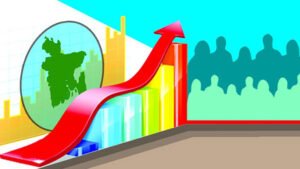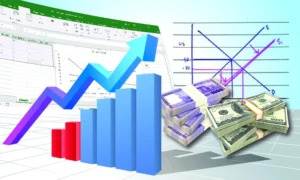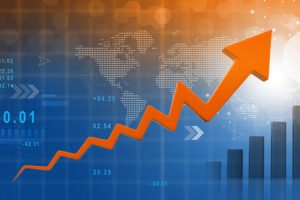Economic analysis serves as the cornerstone of informed decision-making in both public policy and private enterprise. It’s a powerful tool that allows us to dissect complex economic phenomena, understand their underlying principles, and anticipate their future trajectories. From evaluating market trends to assessing the impact of policy interventions, economic analysis offers invaluable insights that shape the direction of economies and businesses worldwide.
Unveiling the Essence of Economic Analysis: A Comprehensive Guide
Understanding Economic Analysis
At its core, economic analysis involves the systematic examination of economic factors, their interrelationships, and their implications. Economists employ various theories, models, and statistical techniques to dissect economic issues and derive meaningful conclusions. This process typically involves:
1. Data Collection and Processing: Economic analysts gather relevant data from diverse sources such as government agencies, international organizations, and industry reports. This data may encompass variables like GDP growth, unemployment rates, inflation indices, consumer spending patterns, and more. Once collected, the data undergoes rigorous processing to ensure accuracy and consistency.
2. Model Building and Hypothesis Formulation: Economists construct theoretical frameworks and models to represent real-world economic phenomena. These models often simplify complex interactions to make them more manageable. Additionally, economists formulate hypotheses to test the relationships between different economic variables. For instance, they might hypothesize that an increase in interest rates leads to a decrease in consumer spending.
3. Analysis and Interpretation: With data in hand and models in place, economists analyze the relationships between various economic factors. They use statistical methods, econometric techniques, and computational tools to quantify these relationships and draw meaningful conclusions. This step involves identifying patterns, trends, correlations, and causal relationships within the data.
4. Policy Evaluation and Forecasting: Economic analysis plays a crucial role in evaluating existing policies and forecasting future outcomes. By simulating different scenarios and policy interventions, economists assess the potential impacts on key economic indicators. This helps policymakers make informed decisions to steer economies in the desired direction.

Key Tools and Techniques
Economic analysts leverage a wide array of tools and techniques to conduct their analyses. Some of the most commonly used ones include:
1. Statistical Analysis: Statistical methods enable economists to summarize and interpret large datasets. Techniques like regression analysis, correlation analysis, and time series analysis help uncover relationships between variables and assess their significance.
2. Econometric Modeling: Econometrics combines economic theory with statistical methods to estimate and test economic relationships. Econometric models help economists make predictions, evaluate policies, and understand the underlying mechanisms driving economic phenomena.
3. Cost-Benefit Analysis: Cost-benefit analysis is a systematic approach to evaluating the pros and cons of different policy options. By quantifying the costs and benefits associated with each alternative, economists can determine which option offers the highest net welfare gain.
4. Input-Output Analysis: Input-output analysis examines the interdependencies between different sectors of an economy. By analyzing how changes in one sector affect others, economists can assess the ripple effects of economic shocks and policy changes.
5. Game Theory: Game theory explores strategic interactions between rational decision-makers. Economists use game theory to analyze competitive markets, bargaining situations, and other scenarios where individuals or firms make strategic choices.
Applications of Economic Analysis
The scope of economic analysis is vast, encompassing a wide range of applications across various domains:
1. Macroeconomic Policy: Economic analysis informs the formulation and implementation of macroeconomic policies such as fiscal policy, monetary policy, and exchange rate policy. By assessing the potential impacts of these policies on key macroeconomic indicators like GDP, inflation, and unemployment, economists help policymakers achieve macroeconomic stability and sustainable growth.
2. Market Analysis: Economic analysis is essential for understanding market dynamics, including supply and demand trends, pricing mechanisms, and market structure. Businesses rely on economic analysis to make strategic decisions regarding pricing, production, investment, and market entry.
3. Public Finance: Economic analysis guides decisions related to public finance, including tax policy, government spending, and budget allocation. By evaluating the efficiency, equity, and incidence of different taxation and spending policies, economists help governments optimize resource allocation and promote social welfare.
4. International Trade and Development: Economic analysis plays a crucial role in analyzing international trade patterns, trade policies, and their implications for economic development. Economists assess the costs and benefits of trade liberalization, regional integration, and foreign aid to inform policymaking in developing and emerging economies.
5. Environmental Economics: With growing concerns about environmental degradation and climate change, economic analysis is increasingly applied to environmental issues. Economists study the economic incentives and policies needed to promote sustainable development, mitigate pollution, and preserve natural resources.

Challenges and Limitations
Despite its power and versatility, economic analysis is not without its challenges and limitations:
1. Data Limitations: Economic analysis relies heavily on data, and the availability and quality of data can vary significantly across different contexts. Inaccurate or incomplete data can lead to biased conclusions and erroneous policy recommendations.
2. Model Uncertainty: Economic models are simplifications of reality and may not capture all relevant factors and interactions. Moreover, economic systems are dynamic and subject to unpredictable shocks and nonlinearities, posing challenges for model prediction and forecasting.
3. Value Judgments: Economic analysis often involves normative judgments about societal values, priorities, and distributional concerns. Different individuals and stakeholders may have divergent preferences and ethical perspectives, complicating the process of policy evaluation and decision-making.
4. Dynamic Complexity: Economic systems are characterized by complex, nonlinear interactions among numerous agents and factors. Understanding and modeling this complexity require sophisticated analytical techniques and computational resources, which may not always be readily available.
In conclusion, economic analysis is a multifaceted discipline that lies at the intersection of theory, data, and policy. By systematically examining economic phenomena, analyzing their underlying mechanisms, and evaluating policy options, economists provide invaluable insights that inform decision-making at all levels of society. While economic analysis faces challenges and limitations, its continued refinement and application hold the promise of fostering prosperity, sustainability, and welfare for future generations.

See more:
